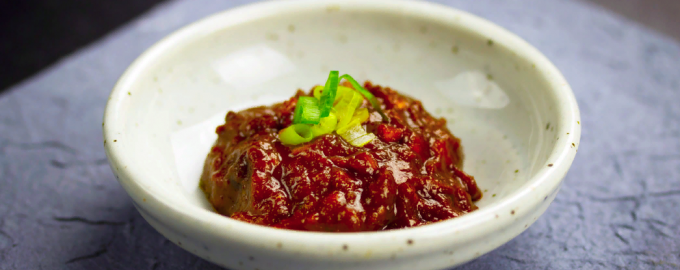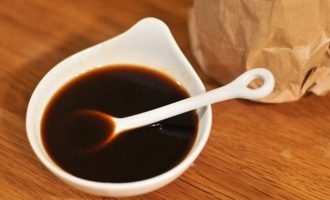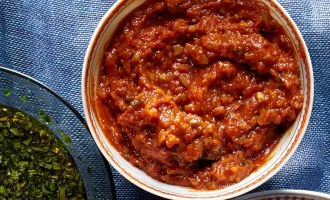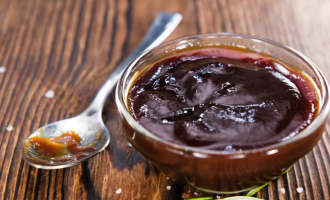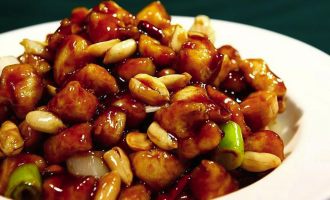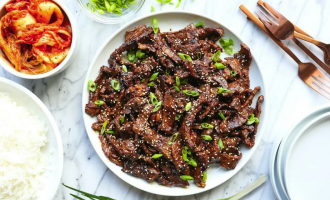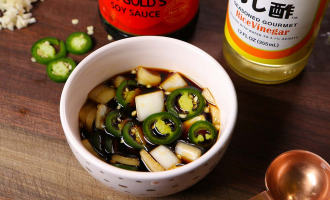Ingredients
- Fermented soybean paste (Doenjang): 100g
- Korean red pepper paste (Gochujang): 50g
- Minced garlic: 2 cloves (10g)
- Minced ginger: 1 teaspoon (5g)
- Sesame oil: 1 tablespoon (15g)
- Soy sauce: 1 tablespoon (15g)
- Rice vinegar: 1 tablespoon (15g)
- Sugar: 1 tablespoon (15g)
- Water: 2 tablespoons (30g)
Per serving
Calories: 150 kcal
Proteins: 5 g
Fats: 10 g
Carbohydrates: 10 g
Method
-
In a mixing bowl, combine the fermented soybean paste (Doenjang), Korean red pepper paste (Gochujang), minced garlic, minced ginger, sesame oil, soy sauce, rice vinegar, sugar, and water.
-
Mix all the ingredients thoroughly until well combined and smooth. You can use a whisk or spoon to ensure there are no lumps.
-
Adjust the consistency by adding more water if you prefer a thinner sauce or reduce the water for a thicker consistency.
-
Taste the ssamjang and adjust the flavor according to your preference. If you want it spicier, add more Korean red pepper paste (Gochujang). If you prefer it sweeter, add a bit more sugar.
-
Once the sauce is well mixed and the desired taste is achieved, transfer it to a serving bowl or jar.
Ssamjang is traditionally served as a condiment in Korean cuisine, particularly in ssam (lettuce wraps). It is commonly paired with grilled meats, such as bulgogi (marinated beef), samgyeopsal (pork belly), or dak galbi (spicy stir-fried chicken). Ssamjang adds a savory, spicy, and slightly sweet flavor to the wraps, enhancing the overall taste of the dish.
Ssamjang is a versatile and flavorful sauce originating from South Korea. It combines the rich umami flavors of fermented soybean paste (Doenjang) with the spiciness of Korean red pepper paste (Gochujang) and other seasonings. Ssamjang adds depth and complexity to various dishes, particularly when used as a dipping sauce for grilled meats in ssam (lettuce wraps).
Facts about the sauce:
- Ssamjang is a staple in Korean cuisine and is commonly found on dining tables in Korean households.
- The combination of fermented soybean paste (Doenjang) and Korean red pepper paste (Gochujang) creates a unique and distinct flavor profile.
- Ssamjang is often considered a healthier alternative to other sauces due to its use of fermented soybean paste, which is rich in protein and beneficial bacteria.
- It is common for people to customize the ssamjang recipe based on their personal preferences, adjusting the spiciness, sweetness, or saltiness to their liking.
- While ssamjang is traditionally used in ssam (lettuce wraps), it can also be enjoyed as a dipping sauce for vegetables, tofu, or even as a spread for sandwiches or burgers.

